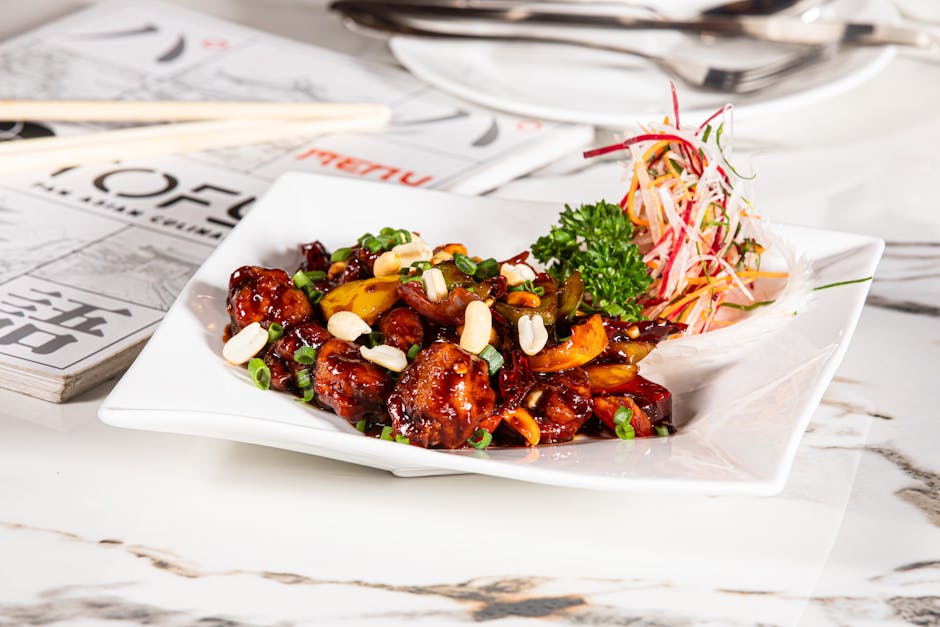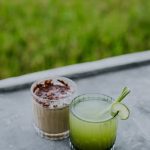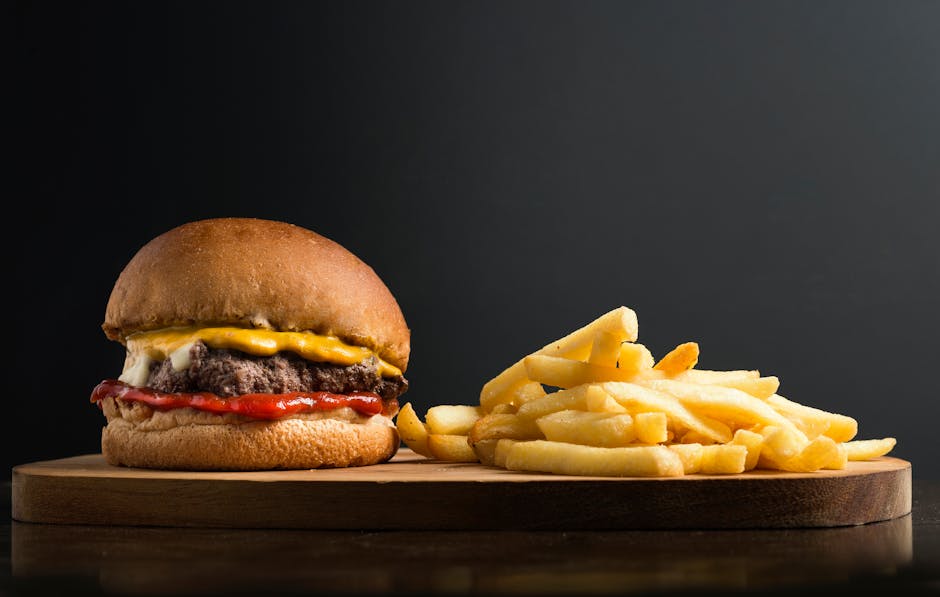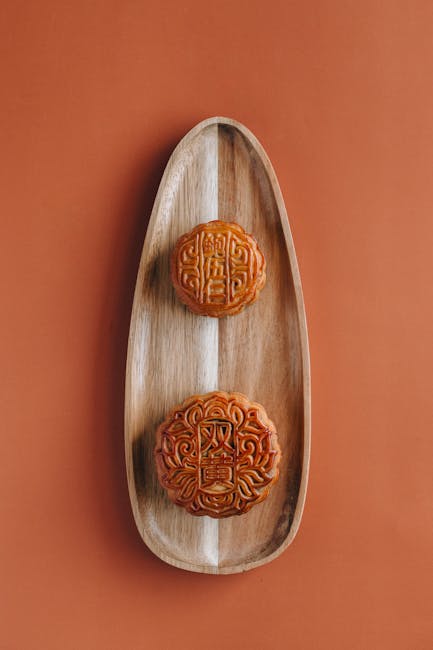Prepare your taste buds for an explosion of flavor with our Best Chinese Kung Pao Chicken recipe! This iconic dish, a cornerstone of Sichuan cuisine, boasts a rich history and cultural significance far beyond its deliciousness. While pinpointing its exact origin is difficult, most culinary historians trace Kung Pao Chicken back to the late Qing Dynasty (1644-1912) in Sichuan province, China. It’s believed to have been created, or at least popularized, by Ding Baozhen, a governor of Sichuan who was known for his culinary appreciation and influence. While the original recipe likely differed from what we know today, its core components – chicken, peanuts, chilies, and Sichuan peppercorns – were present from the start.
The dish’s name itself is intriguing. Kung Pao translates roughly to Minister Bao’s, referencing Ding Baozhen’s official title. The Kung denotes a respectful title, similar to Sir or Mister. This connection to a high-ranking official elevated the dish’s status, contributing to its rapid spread throughout China. It wasn’t until the 20th century that Kung Pao Chicken truly gained international fame, making its way onto menus in Chinatowns across the globe and eventually becoming a staple in many Westernized Chinese restaurants. Interestingly, variations exist across different regions and countries, reflecting the adaptability and enduring appeal of this classic.
The cultural significance of Kung Pao Chicken is multifaceted. It represents a fusion of flavors and textures, mirroring the diverse cultural landscape of China itself. The dish’s vibrant red color, stemming from the chilies, symbolizes good fortune and prosperity in Chinese culture. Moreover, the combination of spicy heat, nutty crunch, and savory chicken embodies the balanced approach to food that is characteristic of Chinese culinary philosophy. Statistics show that Kung Pao Chicken remains one of the most popular and frequently ordered Chinese dishes worldwide, solidifying its place as a culinary icon. Its enduring popularity speaks volumes about its deliciousness and its ability to transcend cultural boundaries, offering a tantalizing glimpse into the rich history and vibrant culinary traditions of Sichuan province and China as a whole.
Beyond its cultural impact, Kung Pao Chicken is also surprisingly versatile. While traditionally made with chicken, variations exist using beef, tofu, or even shrimp. The level of spiciness is also readily adjustable, catering to a wide range of palates. Whether you prefer a fiery kick or a milder warmth, the essential flavors and satisfying textures remain consistent, ensuring that each bite delivers an unforgettable culinary experience. Prepare to be amazed by the depth and complexity of flavors in this truly exceptional dish.
Ingredients and Measurements
This recipe for Best Chinese Kung Pao Chicken relies on precise measurements to achieve the perfect balance of flavors and textures. Using a kitchen scale is highly recommended for accuracy, especially when measuring spices and sauces. While volume measurements are provided, weight measurements offer superior consistency.
Chicken: We’ll be using 1 lb (450g) boneless, skinless chicken thighs, cut into 1-inch cubes. Chicken thighs provide more moisture and flavor than breasts, resulting in a more tender and succulent final dish. Ensure the chicken is cut uniformly for even cooking. If using breasts, consider slightly increasing the cooking time to prevent dryness.
Vegetables: The vibrant flavors of Kung Pao Chicken are enhanced by a colorful array of vegetables. We’ll need 1 cup (150g) dry roasted peanuts, roughly chopped; 1 red bell pepper, seeded and cut into 1-inch pieces; 1 green bell pepper, seeded and cut into 1-inch pieces; 4 scallions, thinly sliced (separate white and green parts for different cooking stages); 1 inch (2.5cm) piece of ginger, peeled and minced; and 3-4 cloves garlic, minced. Using fresh, high-quality ingredients is key to a delicious Kung Pao Chicken.
Sauce: The sauce is the heart of this dish. We need 2 tablespoons (30ml) rice vinegar – for that characteristic tang; 2 tablespoons (30ml) soy sauce – for savory depth; 1 tablespoon (15ml) Shaoxing rice wine (or dry sherry as a substitute) – adds a subtle sweetness and complexity; 2 tablespoons (30ml) dark soy sauce – adds a rich color and depth of flavor (use less if you prefer a lighter color); 2 tablespoons (20g) brown sugar – balances the savory and acidic elements; 1 tablespoon (15ml) cornstarch – acts as a thickening agent; and 1 teaspoon (5ml) sesame oil – imparts a nutty aroma. Adjust the amount of sugar to your preference; some prefer a sweeter, others a more savory profile.
Spice: For the signature kick, we’ll use 2-3 dried red chilies, stemmed and roughly chopped (adjust to your spice tolerance). You can also add a pinch of Sichuan peppercorns (optional) for a unique numbing sensation. Start with a smaller amount of chili and add more to taste, as the heat can build up quickly during cooking.
Oil: We need 2 tablespoons (30ml) vegetable oil for stir-frying. Using a high-smoke-point oil like peanut oil or canola oil is recommended for high-heat cooking. Avoid using olive oil, as it has a lower smoke point and can impart an undesirable flavor at high temperatures.
Garnish (Optional): To finish, consider a sprinkle of sesame seeds for added texture and visual appeal, and some chopped cilantro for freshness. These are purely optional, but enhance the presentation.
Important Note: Always prepare all your ingredients before you start cooking. This will ensure a smooth and efficient stir-fry process, preventing the chicken and vegetables from overcooking.
Preparation of Chicken and Vegetables
The success of Kung Pao Chicken hinges on properly preparing both the chicken and vegetables. This ensures optimal texture and flavor in the final dish. We’ll be using approximately 1 lb (450g) boneless, skinless chicken thighs, and a vibrant mix of vegetables. Chicken thighs are preferred over breasts as they stay juicier during the stir-fry process.
Begin by cutting the chicken thighs into bite-sized, roughly 1-inch cubes. Consistency in size is key for even cooking; overly large pieces will be undercooked while smaller pieces may become dry. Place the cubed chicken in a medium bowl.
Now, let’s prepare the marinade. In a small bowl, whisk together 1 tablespoon of Shaoxing rice wine (or dry sherry as a substitute), 1 tablespoon of soy sauce (low sodium preferred), 1 teaspoon of cornstarch, and ½ teaspoon of ground white pepper. The cornstarch helps to tenderize the chicken and create a slightly glossy finish. Pour this marinade over the chicken, ensuring all pieces are evenly coated. Gently toss to combine and let it marinate for at least 15 minutes, or up to 30 minutes in the refrigerator for optimal flavor infusion. Do not skip marinating; it significantly enhances the chicken’s flavor and texture.
While the chicken marinates, prepare the vegetables. For this recipe, we’ll use 1 red bell pepper, 1 green bell pepper, and 1 small onion. Remove the stems, seeds, and membranes from the bell peppers and cut them into roughly ½-inch pieces. Peel and finely dice the onion. Using consistent sizes for the vegetables ensures even cooking and prevents some from becoming mushy before others are cooked through. You can also add other vegetables like carrots, broccoli florets, or snow peas, adjusting the quantities as you prefer.
Proper vegetable preparation is crucial for maintaining their crispness and vibrant color. Avoid over-chopping, as this can lead to excessive softening during the stir-fry. Once the vegetables are cut, set them aside in separate bowls. This helps prevent them from becoming soggy before they are added to the stir-fry.
Finally, prepare your peanuts. We recommend using about ½ cup of roasted, unsalted peanuts. You can roughly chop them or leave them whole, depending on your preference. Toasting the peanuts before adding them to the dish enhances their flavor and adds a delightful crunch. Set the peanuts aside until ready to use.
With the chicken marinated and vegetables prepped, you are ready to begin the stir-frying process. Remember, thorough preparation is the cornerstone of a successful Kung Pao Chicken, resulting in a dish that is both flavorful and visually appealing.
Sauce Preparation
The sauce is the heart and soul of Kung Pao Chicken, balancing sweet, spicy, sour, and savory flavors perfectly. Getting this right is crucial for a truly authentic and delicious dish. This section details the precise preparation of the Kung Pao sauce, emphasizing techniques for maximum flavor development.
Begin with the aromatics: Finely mince 2 cloves of garlic and 1-inch piece of ginger. The finer the mince, the better the flavor will distribute throughout the sauce. Don’t be afraid to really work at this; a good mince is essential. For a more intense garlic flavor, you can lightly toast the minced garlic in a dry pan before proceeding. This step is optional but recommended.
Next, measure your ingredients accurately: This is paramount for consistency. Use a kitchen scale for the most precise measurements, especially for the chili garlic sauce. For this recipe, you will need:
- 2 tablespoons rice vinegar – This adds acidity and brightens the overall flavor. Use a good quality rice vinegar for the best results.
- 2 tablespoons soy sauce – Use a low-sodium variety if you prefer a less salty sauce. Dark soy sauce can add a richer color and umami flavor, but use it sparingly to avoid overpowering the other ingredients.
- 2 tablespoons Shaoxing rice wine – This adds a subtle sweetness and depth to the sauce. If unavailable, dry sherry can be substituted.
- 1 tablespoon chili garlic sauce – Adjust this to your spice preference. Start with 1 tablespoon and add more gradually to taste. Too much chili garlic sauce can overpower the other delicate flavors.
- 1 tablespoon sugar – Granulated sugar works best. Don’t substitute with other sweeteners like honey or maple syrup, as they will alter the flavor profile.
- 1 tablespoon cornstarch – This is your thickening agent. Mix this with 2 tablespoons of cold water to form a slurry. This prevents lumps from forming in the sauce.
- 1 teaspoon sesame oil – Added at the end for its nutty aroma and flavor. Toasting the sesame oil before adding it to the sauce will enhance its flavor significantly.
Combine the sauce ingredients: In a small bowl, whisk together the rice vinegar, soy sauce, Shaoxing rice wine, chili garlic sauce, and sugar until the sugar dissolves completely. Then, slowly whisk in the cornstarch slurry until fully incorporated. Ensure there are no lumps. The mixture should be smooth and slightly thickened.
Finishing touches: Just before adding the sauce to the cooked chicken and vegetables, gently heat the sauce in a small saucepan over medium heat, stirring constantly, until it thickens slightly. This step ensures that the sauce coats the chicken and vegetables evenly. Remove from heat and stir in the toasted sesame oil. Do not boil the sauce, as this can cause it to become gummy.
Taste and adjust: Taste the sauce and adjust the seasoning as needed. You may want to add more sugar for sweetness, vinegar for acidity, or chili garlic sauce for spiciness. This is your chance to personalize the sauce to your preference.
Stir-frying Technique
Mastering the stir-frying technique is crucial for achieving the perfect Kung Pao Chicken. It’s all about speed, high heat, and maintaining the right level of moisture. This section will guide you through the process, ensuring your chicken is tender and your vegetables are crisp-tender.
Preparation is Key: Before you even turn on the wok or your skillet, ensure everything is mise en place. This means having all your ingredients prepped and measured. Cut your chicken into bite-sized pieces (approximately 1 inch cubes), your vegetables (peppers, onions, garlic, ginger) finely diced, and your sauce ingredients measured and ready to go. Having everything ready will prevent delays and ensure your stir-fry cooks evenly and quickly.
Wok Hei: Achieving true wok hei (the smoky, slightly charred flavor characteristic of stir-fries) requires a very hot wok or large skillet. Heat your wok over high heat for at least 5 minutes before adding any oil. You should see shimmering heat rising from the wok; a drop of water should evaporate instantly.
Oil and Chicken: Add 2 tablespoons of vegetable oil (or your preferred high-heat cooking oil) to the hot wok. Once the oil is shimmering, add your chicken. Do not overcrowd the wok. Work in batches if necessary to ensure even browning. Stir-fry the chicken for 3-4 minutes, until it’s browned and almost cooked through. Remove the chicken from the wok and set aside.
Vegetables: Add another tablespoon of oil to the wok if needed. Add your diced vegetables (onions, peppers, garlic, ginger) and stir-fry for 2-3 minutes, until they are slightly softened but still retain a crisp texture. Don’t overcook the vegetables, as this will make them mushy. The goal is to retain their vibrant color and slight crunch.
Sauce and Chicken: Return the cooked chicken to the wok. Add your pre-prepared Kung Pao sauce (recipe should be provided separately, but typically includes soy sauce, rice vinegar, sugar, chili garlic sauce, etc.). Stir-fry for 1-2 minutes, allowing the sauce to coat the chicken and vegetables evenly. Be careful not to burn the sauce; if it starts to stick, add a splash of water or chicken broth to deglaze the wok.
Finishing Touches: Add your peanuts (roasted and roughly chopped) and dried chilies (optional, adjust to your spice preference) to the wok and toss to combine. Stir-fry for another 30 seconds to heat through. Taste and adjust seasonings as needed. If the sauce is too thick, add a little more water or broth. If it’s too thin, continue to stir-fry for a minute or two to reduce the sauce.
Serving: Immediately remove the Kung Pao Chicken from the wok and serve hot over steamed rice. Garnish with chopped green onions, if desired.
Professional Recommendation: Use a wok with a rounded bottom and high sides for optimal heat distribution and to facilitate easy tossing. A good quality spatula or wok hei is essential for efficient stir-frying.
Finishing Touches and Garnish
The final stages of your Kung Pao Chicken are crucial for achieving that authentic, vibrant flavour and presentation. It’s where you elevate a good dish to a truly memorable one. Careful attention to detail here will make all the difference.
Timing is key. Once you’ve added the chicken back to the wok with the sauce, don’t overcook it. You want the sauce to thicken slightly, coating the chicken evenly, but avoid letting it become dry or sticky. A minute or two is usually sufficient at this stage. Keep the wok moving constantly to ensure even heating and prevent burning.
Thicken the sauce (optional): If your sauce is too thin after simmering, you can quickly thicken it by adding 1-2 teaspoons of cornstarch mixed with 2 tablespoons of cold water. Whisk this slurry vigorously and add it to the wok, stirring constantly until the sauce reaches your desired consistency. Avoid adding too much cornstarch, as this will make the sauce gummy.
Taste and adjust seasoning: This is your final chance to perfect the flavour profile. Taste the Kung Pao Chicken and adjust the seasoning as needed. You might need a touch more soy sauce for saltiness, rice vinegar for acidity, or sugar for sweetness. Remember, a balanced flavour is paramount – sweet, sour, salty, and spicy should all be present, but in harmony.
Garnish strategically: The garnish isn’t just for aesthetics; it adds a final layer of flavour and texture. Traditionally, Kung Pao Chicken is garnished with chopped scallions and dried red chilies. For a vibrant presentation, use approximately 2 tablespoons of finely chopped scallions, distributing them evenly over the chicken. Add 1-2 teaspoons of crushed dried red chilies for a pop of colour and an extra kick of heat (adjust according to your spice preference). Consider adding toasted sesame seeds (about 1 teaspoon) for a nutty aroma and texture.
Plating matters: Serve your Kung Pao Chicken immediately while it’s still hot and the sauce is glistening. A shallow, wide bowl or platter is ideal for showcasing the vibrant colours and textures of the dish. You can also garnish the edges of the serving dish with additional chopped scallions or red chilies for an extra flourish.
Professional recommendation: For a truly authentic presentation, consider using a combination of both fresh and dried chilies. The dried chilies provide a visual punch and subtle heat, while a few finely sliced fresh chilies add a vibrant red colour and a sharper, more immediate heat. This combination provides both visual appeal and a nuanced flavour experience.
Important note: Be mindful of the heat level. If you’re serving this to guests with varying spice tolerances, consider offering a side of plain rice or steamed vegetables to balance the spiciness. Always remember to taste-test throughout the cooking process and adjust according to your preferences and the preferences of your diners.
Serving Suggestions
Our Best Chinese Kung Pao Chicken is incredibly versatile and lends itself to a variety of serving styles, depending on your preference and the occasion. Whether you’re hosting a casual weeknight dinner or a more formal gathering, these suggestions will help you elevate your Kung Pao Chicken experience.
Classic Serving: The most straightforward way to enjoy this dish is served hot over fluffy white rice. We recommend using about 1 ½ cups of cooked rice per serving. The rice acts as a perfect base to soak up the delicious sauce, balancing the spice and richness of the chicken. Garnish with freshly chopped scallions for a pop of color and freshness.
Elevated Presentation: For a more elegant presentation, consider serving the Kung Pao Chicken atop a bed of steamed jasmine rice, arranged artfully on individual plates. A sprinkle of toasted sesame seeds adds a nutty aroma and visual appeal. You can also add a small side of steamed broccoli or bok choy for a balanced and visually stunning meal. Aim for a ratio of approximately 2:1 chicken to vegetables for a satisfying and healthy portion.
Noodle Nirvana: Kung Pao Chicken also pairs exceptionally well with noodles. Choose your favorite – thin egg noodles, wide rice noodles, or even udon noodles will work beautifully. Cook the noodles according to package directions, then toss them gently with the Kung Pao Chicken. For 4 servings, use approximately 8 ounces of noodles. Ensure the noodles are well-coated in the sauce for optimal flavor.
Creative Combinations: Don’t be afraid to experiment! Consider adding other vegetables to your serving. Stir-fried or roasted vegetables like bell peppers, snow peas, or water chestnuts complement the chicken beautifully. Adding about ½ cup of extra vegetables per serving will increase the nutritional value and add textural interest. Remember to ensure the vegetables are cooked to your preferred level of tenderness.
Accompanying Sides: To round out your meal, consider serving a light and refreshing side dish. A simple cucumber salad, a small bowl of egg drop soup, or even some steamed dumplings can provide a nice contrast to the spicy Kung Pao Chicken. Avoid overly rich or heavy sides to prevent the meal from becoming too overwhelming. A light and crunchy element can be a welcome addition.
Spice Level Adjustment: Remember that our Kung Pao Chicken recipe has a customizable spice level. If you prefer a milder dish, you can easily adjust the amount of chili peppers or chili garlic sauce used in the recipe. For those sensitive to spice, consider serving with a side of plain yogurt or rice to help cool down the palate. This offers a comforting counterpoint to the heat.
Leftovers: Kung Pao Chicken is even better the next day! Store leftovers in an airtight container in the refrigerator for up to 3 days. Reheat gently in a pan or microwave, adding a splash of water or broth if needed to maintain moisture. Avoid over-heating, which can make the chicken dry.
Best Chinese Kung Pao Chicken: Recommendations
Our Best Chinese Kung Pao Chicken recipe delivers a vibrant, flavorful experience. To elevate your enjoyment and ensure optimal quality, we offer the following recommendations:
Serving Suggestions: For an authentic experience, serve your Kung Pao Chicken hot, straight from the wok or pan. We recommend serving it over freshly cooked jasmine rice, allowing the fragrant rice to absorb the delicious sauce. Alternatively, you can serve it with steamed broccoli or stir-fried bok choy for a healthier, balanced meal. The slight bitterness of the greens complements the spicy, savory chicken beautifully. For a more substantial meal, consider serving it with egg noodles or even soft, fluffy bao buns for dipping into the sauce.
Storage and Reheating: For optimal freshness, store leftover Kung Pao Chicken in an airtight container in the refrigerator for up to 3 days. Do not freeze the dish, as this can affect the texture and flavor. When reheating, we recommend using a skillet or wok over medium heat, adding a splash of water or chicken broth if the sauce becomes too thick. Avoid microwaving, as this can make the chicken dry and the sauce gummy. Reheat thoroughly before serving.
Complementary Dishes: To create a well-rounded Chinese meal, consider pairing your Kung Pao Chicken with some classic side dishes. A simple cucumber salad with a light vinaigrette provides a refreshing contrast to the spicy chicken. Alternatively, a bowl of hot and sour soup offers a tangy, comforting addition to the meal. For a more substantial side, consider spring rolls or dumplings, providing a textural contrast to the tender chicken and crisp vegetables.
Nutritional Information (per serving, approximate): The nutritional content of Kung Pao Chicken can vary depending on the specific ingredients and portion size. However, a typical serving (approximately 1 cup) contains roughly 350-450 calories. This includes a moderate amount of protein from the chicken, carbohydrates from the rice or noodles, and some healthy fats from the peanuts and oil. The dish is also a good source of iron and various vitamins and minerals. Please note that this is an estimate, and the actual nutritional content may vary. For a more precise analysis, we recommend using a nutritional calculator and inputting your specific ingredients and quantities.
Important Note: The spiciness of Kung Pao Chicken can be adjusted to your preference. If you prefer a milder dish, reduce the amount of chili peppers or chili garlic sauce. Similarly, if you prefer a nuttier flavor, you can increase the amount of peanuts. Experiment with different levels of spice and ingredients to find your perfect balance. Enjoy!





